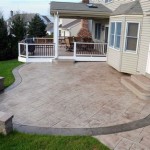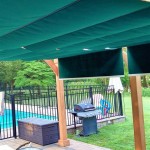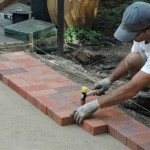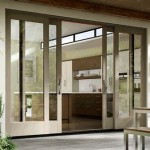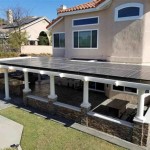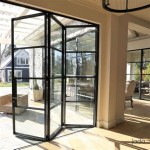DIY Crushed Stone Patio Ideas: A Comprehensive Guide
A crushed stone patio presents a cost-effective and aesthetically pleasing alternative to traditional paving methods. Its permeable nature allows for excellent drainage, minimizing water runoff and potential pooling. Furthermore, the installation process is often simpler than laying pavers or pouring concrete, making it a viable DIY project for homeowners with basic landscaping skills. This article explores various ideas and considerations for creating a durable and attractive crushed stone patio.
Planning and Preparation: Laying the Foundation for Success
The success of a crushed stone patio hinges on meticulous planning and preparation. Before any digging commences, it is crucial to determine the patio's size and shape, considering the intended use and the surrounding landscape. This initial planning phase should also involve obtaining the necessary permits from local authorities, if required.
Once the design is finalized, the next step involves marking the perimeter of the patio. This can be achieved using stakes and string, ensuring accurate dimensions. Following the marking, excavation is necessary. A general guideline is to excavate to a depth of 6 to 8 inches, accounting for the base material and the crushed stone surface. This depth may need to be adjusted depending on the soil conditions and the expected traffic on the patio.
Proper drainage is paramount for the longevity of a crushed stone patio. To enhance drainage, consider a slight slope away from any buildings or structures. This slope should be subtle, approximately 1/4 inch per foot, to ensure comfortable use. Geotextile fabric is then laid within the excavated area. This fabric serves as a barrier, preventing weeds from growing upward and stabilizing the base material by preventing it from mixing with the underlying soil. Select a high-quality geotextile fabric designed for landscaping applications to ensure its durability and effectiveness.
After the geotextile fabric is in place, the base material is installed. This layer typically consists of compacted gravel, such as crushed limestone or road base. The base material provides a stable and level foundation for the crushed stone surface. The gravel should be spread evenly and compacted using a plate compactor. Compaction is crucial for preventing settling and ensuring a solid surface. Several passes with the plate compactor may be necessary to achieve adequate compaction. The thickness of the base layer should be approximately 4 to 6 inches.
Edging is another essential component of a crushed stone patio. Edging materials help to contain the crushed stone and prevent it from spreading into adjacent areas. A variety of edging options are available, including plastic edging, metal edging, wood planks, and natural stones. The choice of edging should complement the overall aesthetic of the patio and the surrounding landscape. When installing edging, ensure it is securely anchored to the ground to prevent movement or displacement.
Selecting the Right Crushed Stone: Aesthetic and Practical Considerations
The type of crushed stone selected will significantly impact the appearance and functionality of the patio. Several factors should be considered when choosing the appropriate stone, including color, size, shape, and durability. Different types of crushed stone offer varying degrees of compaction and drainage.
Decomposed granite (DG) is a popular choice for crushed stone patios. It is a relatively fine-grained material that compacts well, creating a smooth and stable surface. DG is available in a range of colors, from tan to gray, making it versatile for different design styles. However, DG can be susceptible to erosion in areas with heavy rainfall.
Crushed gravel is another common option. It consists of larger, angular stones that interlock to create a durable surface. Crushed gravel provides excellent drainage and is resistant to erosion. However, it may not be as comfortable to walk on as DG, especially in bare feet. The size of the gravel should be appropriate for the intended use of the patio; smaller gravel is generally more comfortable for walking.
Pea gravel is a round, smooth stone that is often used for decorative purposes. While it can be used for patios, it does not compact well and can be difficult to walk on. Pea gravel is best suited for areas with low foot traffic or as a decorative border around a patio.
Limestone screenings are a fine, powdery material that compacts very well, creating a hard, almost concrete-like surface. Limestone screenings are a good option for creating a stable and level patio, but they can be dusty and may require regular watering to prevent them from drying out and cracking.
The color of the crushed stone should complement the surrounding landscape and the style of the house. Consider the existing colors of the siding, roofing, and landscaping elements when making your selection. Samples of different crushed stone options can be obtained from local landscaping suppliers to help visualize the final result.
Once the crushed stone is selected, it should be delivered and spread evenly over the base material. The thickness of the crushed stone layer should be approximately 2 to 4 inches. Use a rake to distribute the stone evenly and to smooth out any uneven areas. Compaction is important for the crushed stone layer as well. A plate compactor can be used to compact the stone, although it may not be necessary for all types of crushed stone. If using DG or limestone screenings, compaction is highly recommended.
Enhancing the Patio: Design Ideas and Practical Considerations
A crushed stone patio can be enhanced with various design elements to create a more inviting and functional outdoor space. Consider incorporating features such as pathways, seating walls, fire pits, and planters to personalize the patio and make it more enjoyable.
Pathways can be created using larger stones, pavers, or stepping stones. These pathways can provide a more defined route through the patio and can help to protect the crushed stone from excessive wear and tear. The pathways should be level and stable, and they should be wide enough to accommodate foot traffic comfortably.
Seating walls can be constructed from stone, brick, or concrete. These walls can provide additional seating and can also serve as a retaining wall to define the patio space. The height of the seating wall should be comfortable for sitting, typically around 18 inches. Consider adding cushions or pillows for added comfort.
A fire pit can be a focal point of a crushed stone patio, providing warmth and ambiance on cool evenings. Fire pits can be constructed from a variety of materials, including stone, brick, and metal. Ensure that the fire pit is located a safe distance from any flammable materials, such as trees and shrubs. Check local regulations regarding fire pit permits and restrictions.
Planters can add color and texture to a crushed stone patio. A variety of plants can be used in planters, depending on the climate and the desired aesthetic. Consider using a mix of annuals and perennials to provide continuous color throughout the growing season. Ensure that the planters have adequate drainage to prevent waterlogging.
Lighting is another important consideration for a crushed stone patio. Outdoor lighting can enhance the ambiance of the patio and can also provide safety and security. Consider using a combination of ambient, task, and accent lighting to create a layered lighting effect. String lights, path lights, and spotlights can all be used to create a welcoming and functional outdoor space.
Maintaining a crushed stone patio requires regular sweeping or raking to remove debris and leaves. Weeds should be removed promptly to prevent them from spreading. Over time, the crushed stone may need to be replenished to maintain the desired depth. In areas with heavy rainfall, the crushed stone may need to be regraded periodically to maintain proper drainage.
Consider the long-term maintenance requirements when designing a crushed stone patio. While crushed stone patios are generally low-maintenance, they do require some upkeep to keep them looking their best. By following these guidelines, homeowners can create a durable, attractive, and functional crushed stone patio that will provide years of enjoyment.
Choosing to incorporate a water feature into your patio design can add a tranquil element. This could range from a small bubbling fountain to a larger, more elaborate pond. Keep in mind the maintenance requirements of any water feature you install, including cleaning and potential winterization depending on your climate.
For increased accessibility, consider incorporating ramps or gently sloping paths into your patio design. This will make the space more usable for individuals with mobility issues and can also create a more inviting and accessible space for all visitors. Ensure that ramps and paths meet ADA guidelines for slope and width.
:strip_icc()/102019730-dd53a1ce1dc14fc4803bd3410249ee7b.jpg?strip=all)
16 Gorgeous Gravel Patio Ideas

10 Gravel Patio Ideas That Are Stunning And Affordable
:strip_icc()/101120215-3329a6709f8248c4ad8791c9241e840e.jpg?strip=all)
16 Gorgeous Gravel Patio Ideas

How To Make A Pea Gravel Patio At Home In The Wildwood

Pea Gravel Patio Diy

10 Gravel Patio Ideas That Are Stunning And Affordable

Best Gravel Patio Ideas Diy Design Materials

How To Build A Diy Patio And Fire Pit Seating Area

6 Easy Ways To Landscape With Stone Pine And Prospect Home

Diy Pea Gravel Patio With Pavers Love Renovations
Related Posts

